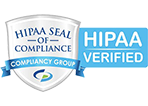Why Do Seatbelt Injuries Occur?
Car accidents—even minor ones—can lead to a wide range of injuries, including those that involve seatbelts. While seatbelts are designed to protect you in the case of a collision, they can also cause injuries of their own, especially if they aren’t worn properly.
While the proper placement of the seatbelt, and a snug fit, can reduce the chances of seatbelt injuries, a serious collision and the force of impact can cause a wide range of damage, including injuries to internal organs. Read on to learn why seatbelt injuries occur, and what you can do to treat them.
Why Do Seatbelt Injuries Occur in Car Accidents?
Seatbelts are intended to provide protection in the event of a car accident, restraining the body when the vehicle comes to a sudden stop. While seatbelts often reduce the risk of injury or death in a car accident, they can also cause injury to a driver or the passengers when their vehicle is involved in a collision. There are many factors that can determine whether you’re injured by a seatbelt in a car accident, like:
- Placement of the seatbelt on the body
- Severity of the collision
- Speed of the vehicles involved in the collision
- Whether the seatbelt was functioning properly
Common Types of Seatbelt Injuries
Many car accident victims experience bruising or abrasions resulting from the seatbelt’s restraint on the body. The severity of the incident usually has a direct impact on the severity of the injury. Some of the most common types of seatbelt injuries include:
- Abdominal injuries
- Bruised or fractured ribs
- Intestinal injury
- Soft tissue injuries around the abdomen
- Whiplash
You could also experience seatbelt syndrome after a car accident, depending on the position of the seatbelt at the moment of impact. Seatbelt syndrome involves internal damage that often isn’t immediately visible after the accident. You should always seek medical attention immediately after an accident—even a minor one—since symptoms may not present themselves for hours, days, or even weeks after the incident, even though the injuries themselves may be severe.
Preventing Seatbelt Injuries
The best way to prevent a seatbelt injury is by wearing it correctly any time you ride in a vehicle. According to NHTSA guidelines, here’s you to properly wear your seatbelt:
- Let the shoulder belt rest across the middle of the chest, away from the neck.
- Ensure the lap belt is placed firmly across the hips and below the stomach.
- Ensure the shoulder strap is never behind the back or under the arm.
- Ensure the belt is snug, and not too tight or too loose, enabling free movement.
If You’ve Been in an Accident, Seek Medical Attention Immediately
Seatbelt injuries are common following a car accident, and the symptoms may not present themselves until well after the incident. Early diagnosis and treatment are essential, so reach out to your trusted medical team immediately after an accident, even if you experience no symptoms. The medical professionals at Impact Medical Group of Clearwater will perform a full medical examination, providing a quick diagnosis of your symptoms to support your complete recovery. Call us today at (727) 292-0200 to schedule your free consultation.
